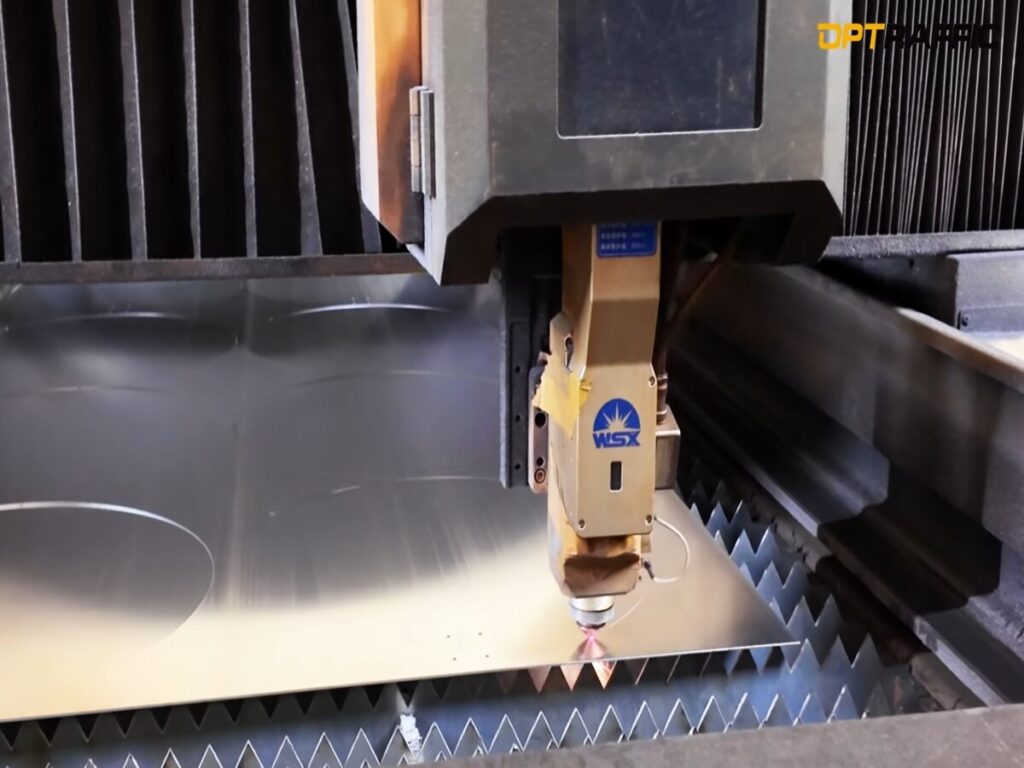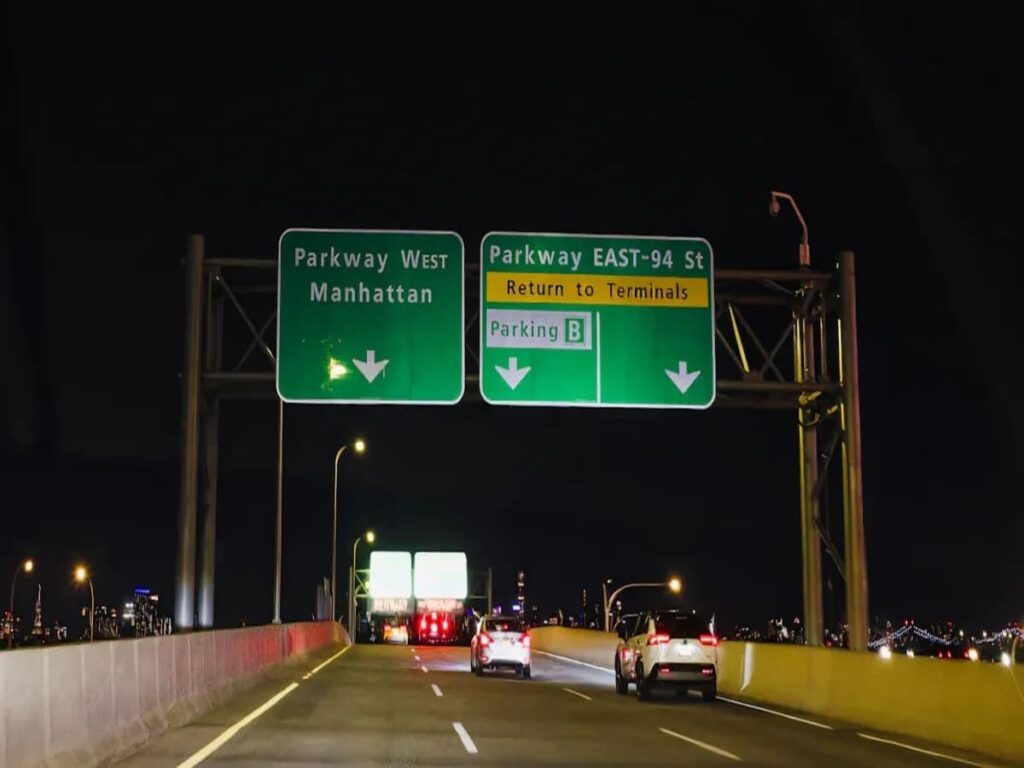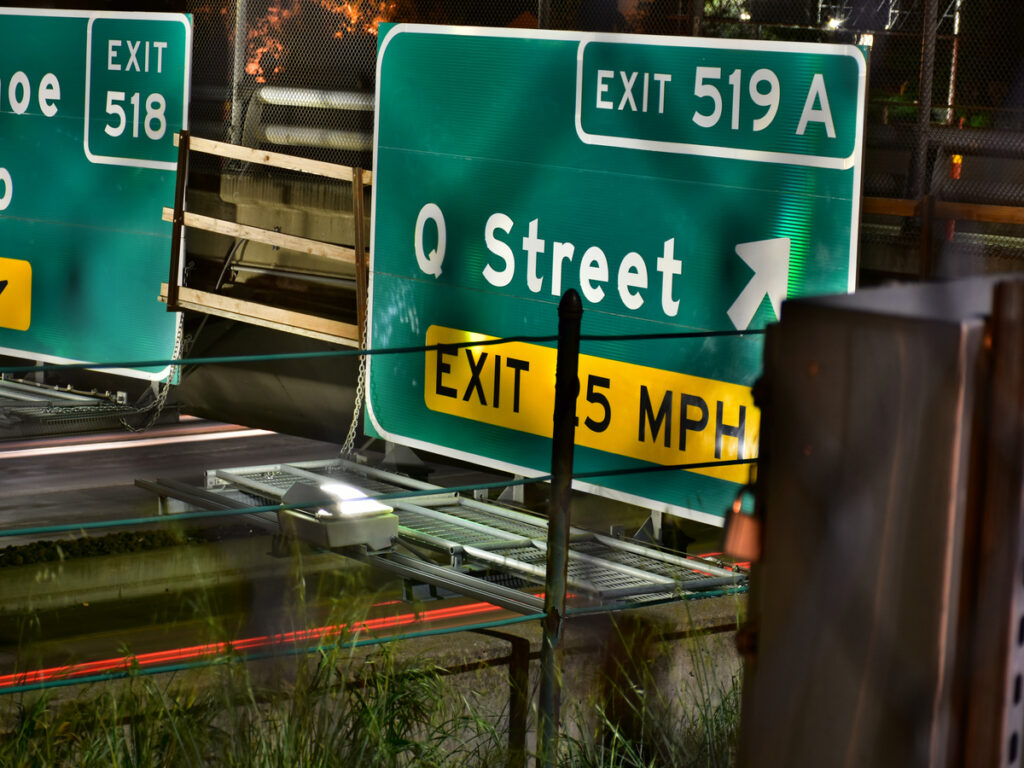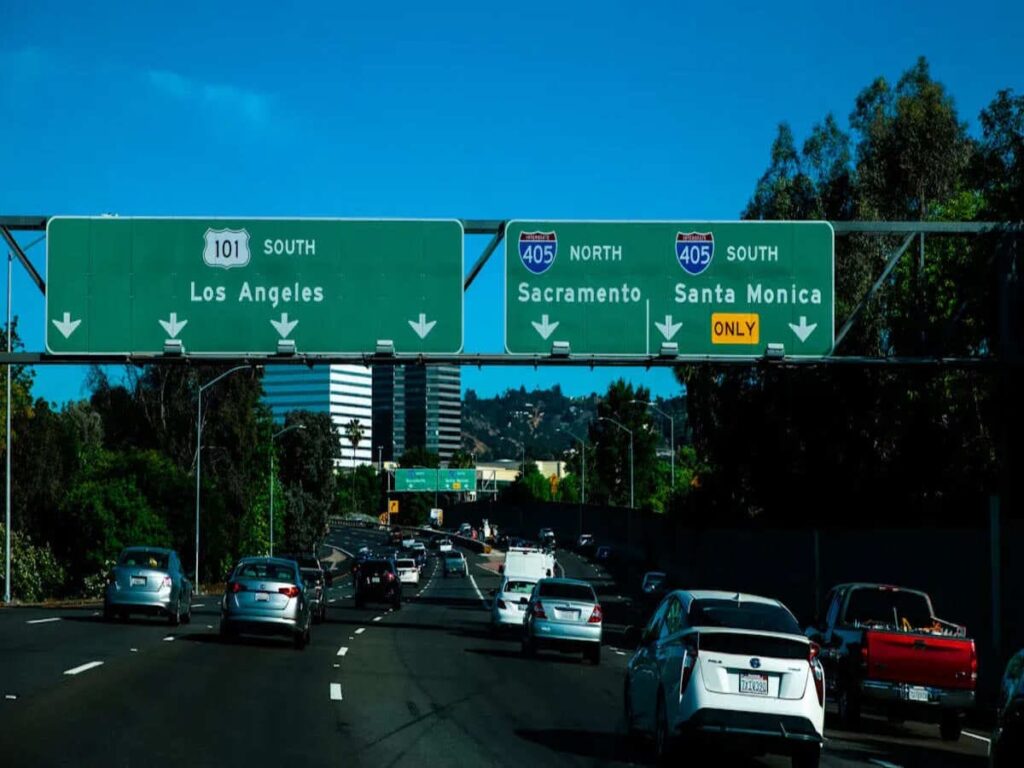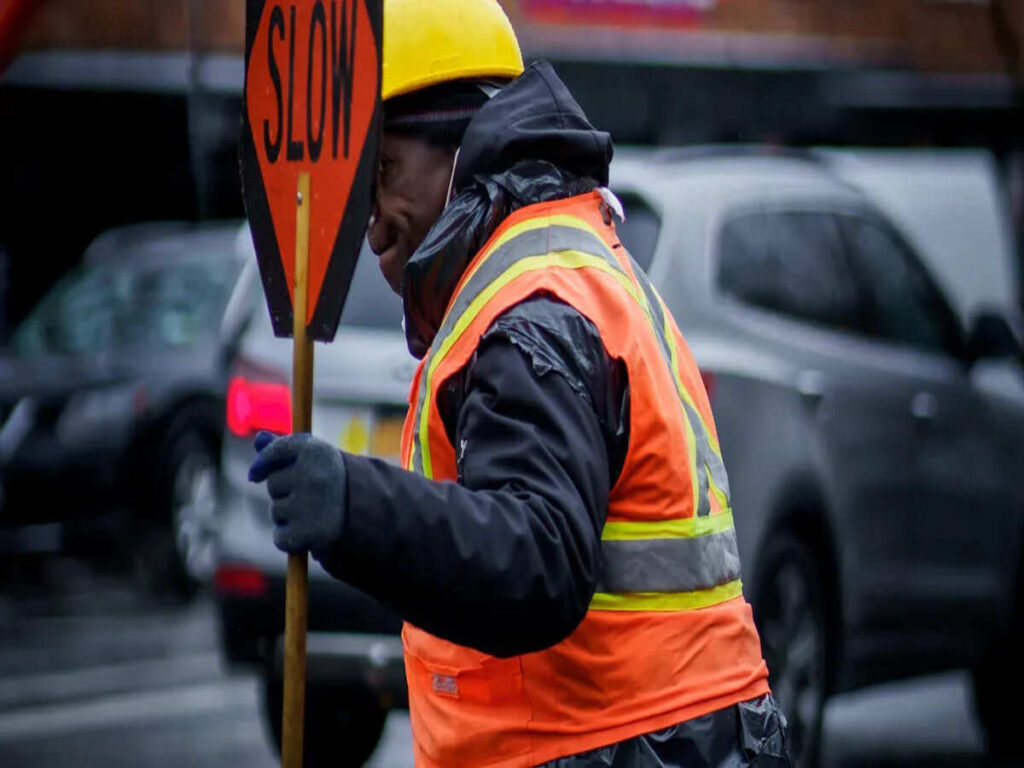
المعيار الأسترالي 1742.3 sets strict requirements for temporary traffic signs used in work zones and other short-term road changes. These signs play a critical role in protecting both workers and drivers by clearly communicating how to safely navigate altered traffic conditions. عندما تستخدم بشكل صحيح, temporary signs help maintain order, reduce risk, and ensure compliance with road rules.
لكن, if signs are poorly placed, difficult to read, or unstable, they can confuse road users—leading to accidents or even legal consequences. To be effective, every temporary sign must be highly visible, securely positioned, وسهل الفهم. Non-compliant signage puts lives at risk and may result in liability for contractors or authorities.
OPTRAFFIC supplies a full range of AS 1742.3-compliant temporary traffic signs مصمم للمتانة, الوضوح, والسلامة. Our signage solutions help ensure your work zones meet legal requirements and protect everyone on the road.
الوجبات الرئيسية
- مثل 1742.3 gives clear rules for temporary traffic signs. These rules help keep workers and drivers safe during roadworks and emergencies.
- Using the correct types, الألوان, and sizes of signs helps drivers see road changes fast. This also helps lower the number of accidents.
- Temporary signs must be put at the right height and kept steady. This makes sure people can see and read them easily.
- Covering or taking away permanent signs that clash with temporary rules stops confusion. هذا يساعد حركة المرور على التحرك بأمان.
- تخطيط دقيق, شيكات منتظمة, and good communication help keep everyone safe. These steps also make sure work sites follow the law.
مثل 1742.3 ملخص
Standard Purpose
مثل 1742.3 explains what is needed for temporary traffic management in Australia. This standard keeps workers and road users safe during roadworks or short-term changes. It gives clear rules for using temporary signs, إشارات, and devices. The standard makes sure everyone gets the same information everywhere in the country. When signs and signals are the same, يعرف السائقون ماذا يفعلون. This helps stop confusion and makes accidents less likely.
ال Austroads Guide to Temporary Traffic Management helps with this standard. It gives more detailed advice. These resources help planners and contractors use the rules the right way at every site.
Scope and Application
مثل 1742.3 is used whenever temporary traffic management is needed. This can be for road construction, صيانة, الأحداث, أو حالات الطوارئ. The standard is for any public road or area where traffic changes for a short time. It tells how to choose, ضع, and take down temporary signs. It also says what to do with permanent signs during works.
The Austroads Guide to Temporary Traffic Management gives extra advice for different situations. It shows how to use the standard for local needs. المقاولون, المجالس, and traffic controllers use these documents to plan safe work zones. They use the advice to follow the law and keep people safe.
A table below shows the main areas the standard covers:
| Area Covered | Example Situations |
|---|---|
| أعمال الطرق | إغلاق حارة, resurfacing |
| Special events | المسيرات, المهرجانات |
| الاستجابة للطوارئ | Floods, الحوادث |
| Maintenance activities | Sign repairs, line marking |
The Austroads Guide to Temporary Traffic Management and AS 1742.3 العمل معا. They help make sure temporary traffic management is safe and the same all over Australia.
إشارات المرور المؤقتة
أنواع الإشارة
Temporary traffic control signs help drivers and people walking know what to do. مثل 1742.3 lists different groups of these signs. Each group has its own job during roadworks, مبنى, أو حالات الطوارئ.
- علامات التحذير المسبقة tell people about changes ahead. علامات مثل “ROADWORK AHEAD” أو “استعد للتوقف” warn drivers early. These signs give time to slow down and get ready for new road rules.
- Speed reduction signs show lower speed limits in work areas. These limits are usually between 40 و 60 كم/ساعة. They keep workers safe and help cars move safely.
- علامات الانعطاف show drivers where to go if a road is closed. “التفاف” و “USE OTHER SIDE” علامات, with arrows, help drivers find another way.
- Traffic controller signs help workers control cars and trucks. “STOP/SLOW” bat signs let workers stop or let cars go.
- Lane status signs tell drivers about closed or changed lanes. علامات مثل “MERGE LEFT”, “LANE CLOSED”, or arrows help cars move around work safely.
Temporary traffic signs must fit what is happening on the road. The right sign helps everyone know what to do. إذا كانت العلامات خاطئة أو مفقودة, people can get mixed up and accidents can happen.
Colour Conventions
Colour is very important for temporary traffic control signs. مثل 1742.3 has rules for what colours to use. This helps drivers know what the sign means.
| نظام الألوان | استخدام نموذجي | مثال علامات |
|---|---|---|
| Yellow with black | Warning and hazard information | “ROADWORK AHEAD” |
| الحدود الحمراء, أبيض | Regulatory instructions | مؤقت “قف” |
| البرتقالي (state-based) | Construction and guidance (some states) | “التفاف” |
- Yellow with black: This colour warns about danger, أعمال الطرق, or changes. Drivers know to be careful when they see it.
- الأحمر والأبيض: These colours are for rules, like temporary “قف” أو “ممنوع الدخول”. These signs must be obeyed.
- البرتقالي: Some states use orange for building or detour signs. This colour is easy to see in busy work areas.
If the wrong colour or size is used, drivers may not understand. The sign might not be legal. Always use the right standard so every sign is clear and allowed.
Temporary Traffic Control Signs
Temporary traffic control signs must be easy to see, big enough, وفي المكان المناسب. People must be able to read them from far away, حتى في الطقس السيئ أو في الليل. مثل 1742.3 says how big each sign should be, depending on how fast cars are going and what the road is like.
Building sites often need many types of temporary traffic control signs at once. على سبيل المثال, a roadwork area might have advance warning signs, speed reduction signs, and lane status signs together. Detour signs help cars go around the work. Traffic controller signs help workers manage cars at busy spots.
Roadwork signs must always stand up straight and not fall over. قواعد ثقيلة, أكياس الرمل, or special stands keep signs from falling in wind or when cars go by. Signs should not block footpaths or make them less than one metre wide unless there is a safe way for people to pass.
نصيحة: Check all temporary traffic control signs often during the job. Replace any broken or missing signs right away. جيد, clear signs keep everyone safe and help avoid trouble with the law.
Temporary traffic signs are needed for every building or roadwork job. يحافظون على سلامة العمال, مساعدة السائقين, and make sure the rules are followed. Using these signs the right way stops confusion and keeps traffic moving, even when things are hard.
وضع تسجيل
Mounting and Height
Putting temporary traffic control signs in the right place is very important. The standard says signs must be 1.0 ل 1.5 metres high from the ground to the bottom. This height lets drivers see the signs at their eye level. Workers need to make sure signs are not too low or too high. If signs are at the wrong height, drivers might not see them well. Signs at the right height help drivers notice changes on the road quickly.
Temporary traffic control signs must always stand up straight and not fall over. قواعد ثقيلة, أكياس الرمل, or special tripods keep signs steady. These supports stop signs from falling in the wind or when cars go by. If a sign falls or leans, it can confuse drivers and cause danger. Workers should check every sign often to make sure it is still in the right spot.
Visibility and Stability
Signs must be easy to see to work well. They should face the cars coming towards them. On bends or at night, workers might need to turn the sign a bit. This helps drivers see the sign better. Signs made with reflective material are easier to see in the dark or when it rains.
Temporary traffic control signs must not block footpaths or make them too narrow. Paths must stay at least one metre wide. If a sign makes a path smaller, there must be a safe way for people to walk. This rule keeps people safe near roadworks and makes sure everyone can get through.
ملحوظة: Workers should check signs often to keep everyone safe. Broken or missing signs must be replaced right away. Good sign placement and steady signs help stop confusion and protect both drivers and workers.
Control Zones Structure
Temporary traffic control uses a simple plan to keep people safe. مثل 1742.3 splits each work site into four zones. Each zone has its own job to help traffic move and protect people.
منطقة التحذير المسبق
The advance warning area tells drivers about changes ahead. Signs here warn that roadworks or dangers are coming soon. Drivers see signs like “ROADWORK AHEAD” أو “استعد للتوقف”. These signs give time to slow down and get ready for new rules.
Advance warning signs must be clear and easy to spot. They should be far enough from the work site. This gives drivers time to react and not stop suddenly.
المنطقة الانتقالية
The transition area helps drivers move into the new road layout. Signs and cones guide cars into new lanes or around things. Lane tapers and arrows show where to merge or turn. This area helps stop confusion and keeps traffic moving well.
منطقة النشاط
The activity area is where the work takes place. العمال, الآلات, and tools are in this space. Barriers and signs keep this area safe. Only allowed people and vehicles can go in. Drivers must follow all rules and speed limits here. Clear lines and signs protect workers and road users.
منطقة الإنهاء
The termination area is at the end of the work zone. Signs here tell drivers that normal roads are back. Drivers see signs like “END ROADWORK” أو “RESUME SPEED”. This area helps drivers go back to normal driving safely.
Each zone in the control plan is important. All the zones together help manage traffic and keep everyone safe near roadworks.
Managing Permanent Signs
Covering Conflicting Signs
أحيانا, permanent road signs do not match temporary traffic changes. Workers need to cover these signs so drivers do not get confused. مثل 1742.3 says any sign that does not fit the new road rules must be fully covered. Drivers should only see signs that match the road right now.
A good cover hides every part of the permanent sign. No words, أرقام, or symbols should show at all. Workers use thick materials like black plastic or special covers to hide the sign. They make sure the cover is tight so wind or rain cannot move it. If a cover falls off, drivers might see both signs. This can make mistakes happen or even cause accidents.
نصيحة: Workers should look at all covered signs at the start of each shift. They must fix any loose or broken covers right away.
A simple checklist for covering signs:
- Find all permanent signs that do not match the new road rules.
- استخدام قوي, thick covers.
- Attach covers tightly.
- Check covers often.
Removal and Restoration
When roadworks are done, workers must take away all temporary signs and covers. They must make sure permanent signs can be seen again. This step is as important as setting up the work zone. If workers forget to uncover a sign, drivers might miss something important.
The steps for restoring signs are:
- Take down all temporary traffic control signs.
- Remove covers from permanent signs.
- Make sure each permanent sign is clean and easy to see.
- Tell the local authority if any signs are broken.
ملحوظة: Fast and careful work helps traffic go back to normal. It also stops confusion or fines for not following the rules.
A good sign change keeps everyone safe and makes sure the road follows the law. 🚦
Road Safety and Compliance
سلامة العمال والمشاة
Keeping workers and people walking safe is most important. مثل 1742.3 gives clear rules to protect everyone near roadworks. Workers must wear bright clothes so cars can see them. Barriers keep workers away from moving cars and trucks. People walking need safe paths that are easy to use. These paths should not have anything dangerous in the way. Signs must warn drivers and people walking about changes ahead. All these steps help make the road safe for everyone.
Good planning and checking often keeps the area safe. Teams should look at signs and barriers many times. They must fix any problems right away to keep people safe.
A safe work site means fewer accidents can happen. It also helps everyone know where to go and what to do. Road safety needs clear signs and easy instructions.
Legal Obligations
Everyone must follow AS 1742.3. المقاولون, المجالس, and traffic managers must use the standard. The law says signs must be put in the right place. Signs must be looked after and taken away when work is done. Not following these rules can mean fines or legal trouble.
A table below shows the main legal jobs:
| Duty | لماذا يهم |
|---|---|
| Use correct signs | Stops people getting confused |
| Maintain sign visibility | Helps keep roads safe |
| Remove signs after works | Makes roads normal again |
| Cover conflicting signs | Follows the rules |
Following the rules keeps roads safe for everyone. It also protects workers, السائقين, and people walking from harm. Doing the right thing helps people trust the work and keeps jobs going well.
يتذكر: Following the rules is needed for safety and to follow the law.
Best Practice Tips
التخطيط والتقييم
Good temporary traffic management starts with careful planning. Teams need to look at the site and find all risks before work starts. They must use advice from AS 1742.3 and the Austroads Guide to Temporary Traffic Management. These guides help teams pick the right signs and tools. Planners should think about the road type, كم هو مشغول, and what people walking need. They also need to check for any permanent signs that might confuse people. Careful planning helps stop mistakes and keeps everyone safe.
نصيحة: Use a checklist to make sure every safety step is done before work starts.
المراقبة والتكيف
Teams must keep checking the work zone during the job. They should walk around the site often and make sure all signs can be seen and are steady. If the weather or traffic changes, teams might need to move signs or barriers. The guides say to swap broken signs straight away. Acting fast stops confusion and keeps the area safe. Teams should also write down any changes they make. This helps them do better next time.
- Check signs and barriers every day.
- Change things if the weather or traffic changes.
- Swap broken or missing equipment right away.
Communication and Training
Clear talking helps everyone know their job in traffic management. Supervisors must tell workers what to do before each shift. They should explain where signs go and any special dangers. Training helps workers learn about new tools and rules. Good talking also means telling the public about changes. Signs and notices should show what is different because of the work. When everyone knows what will happen, the site is safer and runs better.
ملحوظة: Training all the time helps teams know the newest safety rules and traffic management ideas.
مثل 1742.3 sets out clear rules for temporary traffic control in Australia. Work crews and traffic planners who follow these standards play a vital role in keeping both road users and workers safe. Choosing the right signs—and placing them correctly—is essential for creating a safe and legally compliant environment. Maintaining both temporary and permanent signs is equally important, ensuring ongoing clarity and visibility.
To stay effective, traffic management teams should regularly review best practices and stay informed about any updates to the standards. Ongoing training and awareness help ensure that every work zone operates safely and in line with current regulations.
To understand how AS 1742 fits within the broader traffic sign framework, اقرأ مدونتنا: الفهم كما 1742: أساس لوائح علامة المرور الأسترالية.
التعليمات
ما هو الغرض الرئيسي من 1742.3?
مثل 1742.3 gives the rules for temporary traffic control in Australia. It helps keep workers and people on the road safe during roadworks, الالتفاف, وحالات الطوارئ. The standard makes sure all signs look the same and follow clear rules.
Which colours should temporary traffic signs use?
Temporary warning signs are yellow with black writing. Regulatory signs have a red border and a white background. Some states use orange for construction signs.
Using the right colour helps drivers know what the sign means fast.
How high should workers mount temporary traffic signs?
Workers must put signs 1.0 ل 1.5 متر فوق الأرض. This height puts the sign at the driver’s eye level.
- Signs must stand up straight and not fall over.
- Heavy bases or sandbags help keep signs in place.
What should workers do with permanent signs during roadworks?
Workers must cover any permanent sign that does not match the temporary rules. The cover must not let anyone see through and must stay on tight.
| خطوة | فعل |
|---|---|
| 1 | Find signs that clash |
| 2 | Cover them fully |
| 3 | Check covers each day |
من يجب أن يتبع 1742.3?
المقاولون, المجالس, and traffic managers must use AS 1742.3.
Following the rules keeps everyone safe and stops legal trouble.


